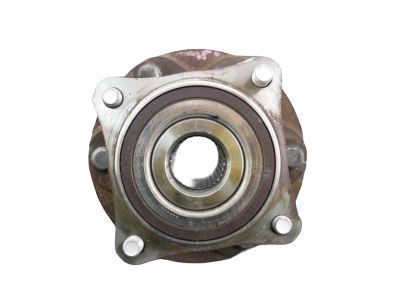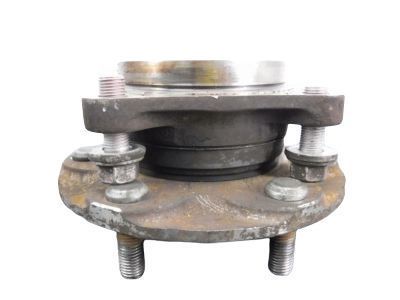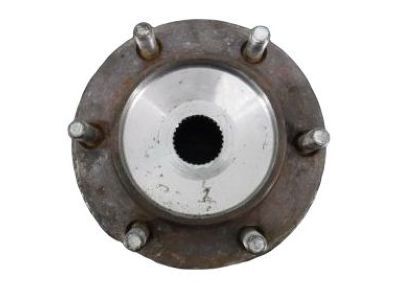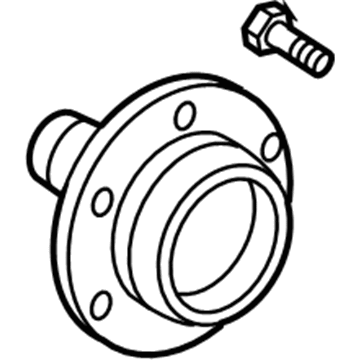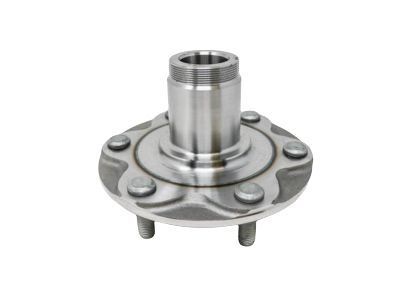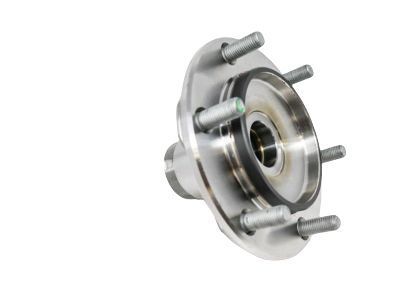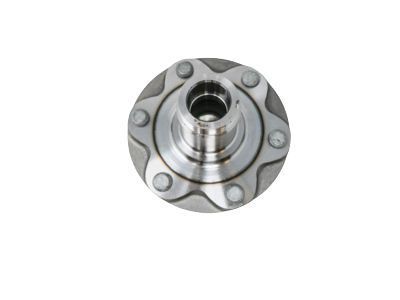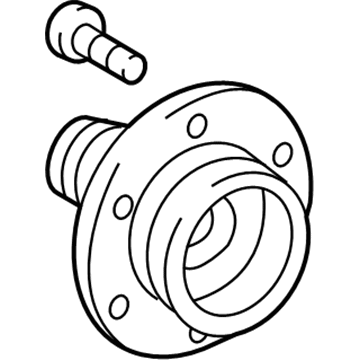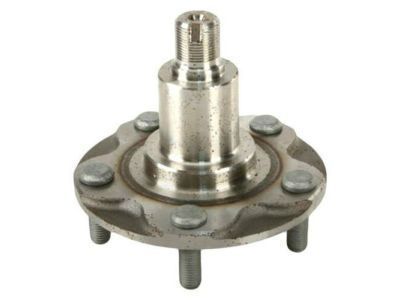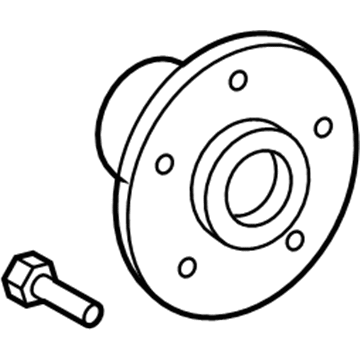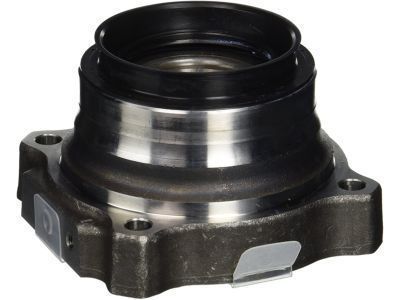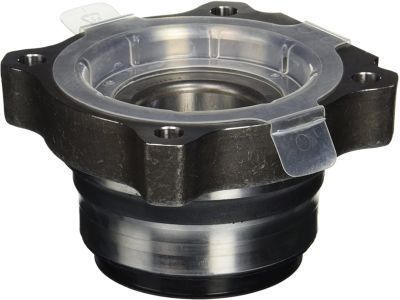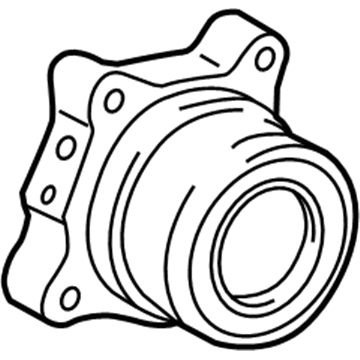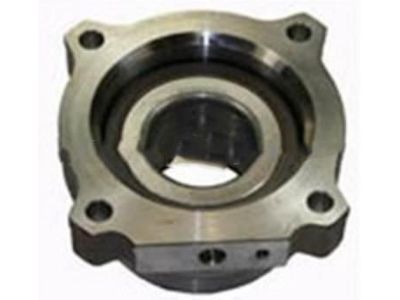×
ToyotaParts- Hello
- Login or Register
- Quick Links
- Live Chat
- Track Order
- Parts Availability
- RMA
- Help Center
- Contact Us
- Shop for
- Toyota Parts
- Scion Parts
My Garage
My Account
Cart
OEM 2006 Toyota Tacoma Wheel Hub
Wheel Axle Hub- Select Vehicle by Model
- Select Vehicle by VIN
Select Vehicle by Model
orMake
Model
Year
Select Vehicle by VIN
For the most accurate results, select vehicle by your VIN (Vehicle Identification Number).
5 Wheel Hubs found

2006 Toyota Tacoma Front Hub
Part Number: 43502-04080$165.31 MSRP: $234.02You Save: $68.71 (30%)Ships in 1-3 Business DaysProduct Specifications- Other Name: Hub Sub-Assembly, Front Axle; Wheel Hub, Front; Wheel Hub Repair Kit; Wheel Hub Assembly; Hub; Hub Sub-Assembly, Front Axle, Passenger Side; Hub Sub-Assembly, Front Axle, Driver Side; Wheel Hub
- Position: Front
- Replaces: 43502-04120
- Item Weight: 4.10 Pounds
- Condition: New
- Fitment Type: Direct Replacement
- SKU: 43502-04080
- Warranty: This genuine part is guaranteed by Toyota's factory warranty.

2006 Toyota Tacoma Wheel Hub, Front
Part Number: 43502-04140$176.95 MSRP: $252.65You Save: $75.70 (30%)Ships in 1-3 Business DaysProduct Specifications- Other Name: Hub Sub-Assembly, Front Axle; Wheel Hub, Front; Wheel Hub Repair Kit; Front Hub; Hub; Hub Sub-Assembly, Front Axle, Passenger Side; Hub Sub-Assembly, Front Axle, Driver Side
- Position: Front
- Replaces: 43502-04130
- Item Weight: 6.50 Pounds
- Item Dimensions: 11.6 x 8.4 x 5.2 inches
- Condition: New
- Fitment Type: Direct Replacement
- SKU: 43502-04140
- Warranty: This genuine part is guaranteed by Toyota's factory warranty.

2006 Toyota Tacoma Front Hub
Part Number: 43502-04112$173.07 MSRP: $245.00You Save: $71.93 (30%)Ships in 1-3 Business DaysProduct Specifications- Other Name: Hub Sub-Assembly, Front Axle; Wheel Hub, Front; Wheel Hub Repair Kit; Hub; Hub Sub-Assembly, Front Axle, Passenger Side; Hub Sub-Assembly, Front Axle, Driver Side; Wheel Hub
- Position: Front
- Replaces: 43502-35230
- Item Weight: 10.80 Pounds
- Item Dimensions: 12.4 x 12.2 x 6.8 inches
- Condition: New
- Fitment Type: Direct Replacement
- SKU: 43502-04112
- Warranty: This genuine part is guaranteed by Toyota's factory warranty.

2006 Toyota Tacoma Bearing Housing, Driver Side
Part Number: 42460-04010$356.15 MSRP: $521.95You Save: $165.80 (32%)Product Specifications- Other Name: Bearing Assembly, Rear Axle; Wheel Bearing & Hub; Wheel Hub Repair Kit; Axle Bearing; Hub Assembly; Rear Hub & Bearing; Hub & Bearing; Hub & Bearing Assembly, Rear Axle, Driver Side
- Position: Driver Side
- Part Name Code: 42450B
- Item Weight: 9.00 Pounds
- Item Dimensions: 7.0 x 6.6 x 5.0 inches
- Condition: New
- Fitment Type: Direct Replacement
- SKU: 42460-04010
- Warranty: This genuine part is guaranteed by Toyota's factory warranty.

2006 Toyota Tacoma Bearing Housing, Passenger Side
Part Number: 42450-04010$356.15 MSRP: $521.95You Save: $165.80 (32%)Product Specifications- Other Name: Bearing Assembly, Rear Axle; Wheel Bearing & Hub; Wheel Hub Repair Kit; Axle Bearing; Rear Hub & Bearing; Hub & Bearing; Hub & Bearing Assembly, Rear Axle, Passenger Side
- Position: Passenger Side
- Part Name Code: 42450A
- Item Weight: 6.60 Pounds
- Item Dimensions: 6.1 x 6.1 x 4.6 inches
- Condition: New
- Fitment Type: Direct Replacement
- SKU: 42450-04010
- Warranty: This genuine part is guaranteed by Toyota's factory warranty.
2006 Toyota Tacoma Wheel Hub
Looking for affordable OEM 2006 Toyota Tacoma Wheel Hub? Explore our comprehensive catalogue of genuine 2006 Toyota Tacoma Wheel Hub. All our parts are covered by the manufacturer's warranty. Plus, our straightforward return policy and speedy delivery service ensure an unparalleled shopping experience. We look forward to your visit!
2006 Toyota Tacoma Wheel Hub Parts Q&A
- Q: How to service and repair the front Wheel Hub on 2006 Toyota Tacoma?A: Time to repair or service the front axle hub starts by detaching the cable from the negative battery terminal followed by front wheel removal. The speed sensor connector needs removal alongside the two bolts to separate the skid control sensor wire. First remove the front speed sensor bolt but retain it. Then separate the flexible front hose by taking out its support bolt. As a next step maintain the front disc brake caliper assembly by disconnecting the flexible hose first then removing the corresponding two bolts. Use Special Service Tool: 09610-20012 and remove the steering knuckle arm tie rod end sub-assembly after removing its nut and cotter pin. To disengage the front suspension lower arm you need to remove its two bolts and front lower ball joint from the front axle while you should perform the same procedure for the front suspension upper arm with Special Service Tool: 09628-62011. The front axle hub removal begins with tapping out the knuckle grease retainer cap with a screwdriver and hammer before using Special Service Tool: 09930-00010 and a hammer to loosen the front axle hub nut. Next, remove the lock nut and spacer as well. Use press set Special Service Tool: 09710-30021 (09710-03131) with 09950-40011 (09951-04020, 09952-04010, 09953-04020, 09954-04010, 09955-04031, 09957-04010, 09958-04011) to free the axle hub by removing its dust cover after you remove the three connecting bolts from the steering knuckle. Use a screwdriver to pry out the front axle hub oil seal before you detach the inner bearing with snap ring pliers along with such Special Service Tools as 09950-60020 (09951-00710) and 09950-70010 (09951-07150) operated with a press. The installation process begins with inserting a new front axle hub inner bearing through Special Service Tools 09527-17011 and 09608-10010 and then using a press. Afterward, install a new snap ring. Insert the new front axle hub oil seal through Special Service Tool: 09223-15020, 09527-17011 using a plastic-faced hammer but ensure to coat the seal lip with MP grease. Attach the dust cover onto the steering knuckle by fastening three bolts while torquing them to 8.3 Nm (85 kgf-cm, 73 inch lbs.). Afterwards, insert the axle hub using Special Service Tool: 09710-30050. The lock nut requires installation onto the axle hub and tightens to 199 Nm (2,029 kgf-cm, 147 ft. lbs.) before receiving hammer and chisel staking. Strict attention must be given to installing the knuckle grease retainer cap while avoiding any potential damage. The front axle hub must be attached first and afterward install the front suspension upper arm with a new nut while torquing it to 110 Nm (1,122 kgf-cm, 81 ft. lbs.) and place the clip where its holes align correctly. Begin with installing the front lower ball joint attachment LH using two bolts at 160 Nm (1,631 kgf-cm, 118 ft. lbs.) then attach the tie rod end to the steering knuckle arm through a new nut torqued up to 49 Nm (500 kgf-cm, 36 ft. lbs.) and installing a new cotter pin. The replacement process starts with front disc mounting and front disc brake caliper assembly assembly using two bolts at 108 Nm (1,101 kgf-cm) torque. Next, install new gasket components and a flexible hose by torquing the union bolt to 30 Nm (306 kgf-cm). The front flexible hose needs a bolt installation followed by torque application of 32 Nm (326 kgf-cm, 24 ft. lbs.) before adding the front speed sensor using its bolt which requires cleaning the sensor tip and torque application of 8.3 Nm (85 kgf-cm, 73 inch lbs.). Use two bolts to install the skid control sensor wire while torquing them to 5.0 Nm (51 kgf-cm, 44 inch lbs.), then connect the speed sensor connector before installing the front wheel with a torque of 113 Nm (1,152 kgf-cm, 83 ft. lbs.) with the reconnect cable torqued to 3.9 Nm (40 kgf-cm, 35 inch lbs.). Complete the procedure by filling the reservoir with brake fluid, performing master cylinder and brake line bleeding when needed and checking fluid levels before inspecting for leaks and confirming appropriate front wheel alignment.
